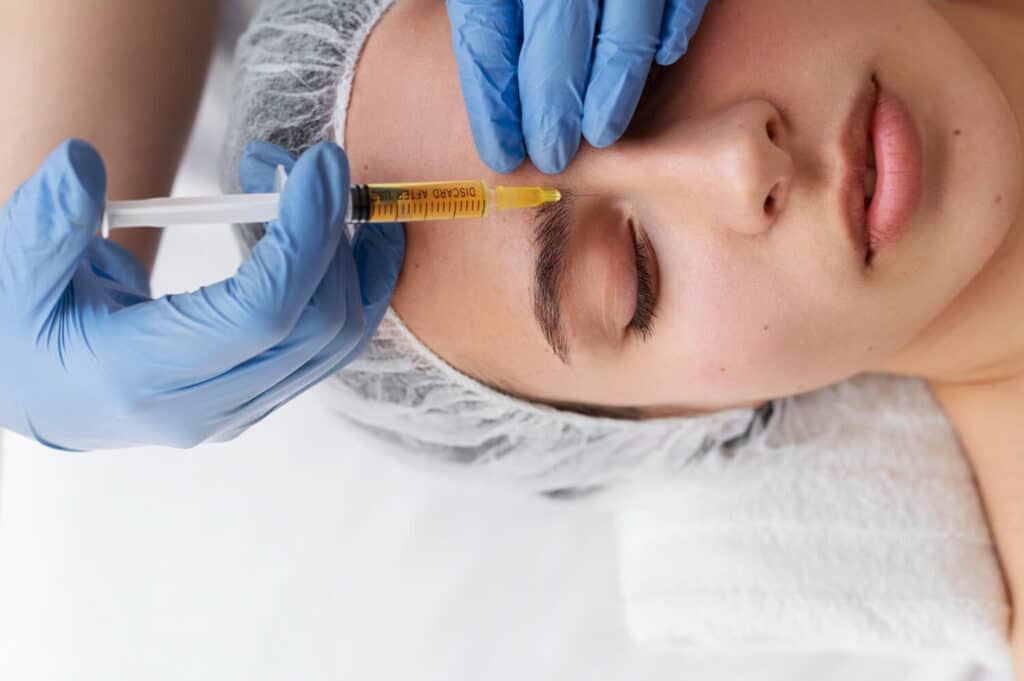Platelet-rich plasma is a regenerative healing treatment that utilises blood plasma for effective healing against physical injuries. The foundation of this treatment lies in the body’s ability to heal itself with its plasma. Although not approved by the Food and Drug Association, it is used in many healthcare centres to boost natural tissue growth in patients.
Additionally, the procedure is entirely risk-free and effective against many diseases, such as knee osteoarthritis and other joint-related problems. With that said, let’s discuss the PRP treatment elaborately in the next section.
What is PRP treatment ?
The PRP treatment is generally performed with patients injected with platelet concentrations to heal tendons, ligaments, or muscles. That way, it improves the patients’ muscular healing and cures some less severe injuries.
The injections are filled with the patient’s blood in tubes to centrifuge the solution with platelet concentration. This concentration has active particles injected into the body through tissues to stimulate optimum cell growth and regeneration. Moreover, doctors use ultrasound to identify torn tendons or joint pains and the spots to be injected into the patient’s body.
PRP treatment enhances the growth and healing process against the shoulder or joint pains. The treatment also helps treat soft-tissue injuries and alleviate chronic pain. Generally, people with tendinosis or golfer’s elbow can be treated with PRP treatments.
Additionally, PRP treatments reduce the usage of anti-inflammatory medicines or pills. That way, the side effects of the injections are minimal as the treatment uses the patient’s blood and avoids any type of lingering allergies.
Now that we have proper knowledge about PRP treatments let’s discuss the applications of the PRP treatments in the next section.
Applications of the PRP treatments
- Helps heal muscular injuries
PRP injections treat muscular injuries and joint pain conditions in patients. Generally, athletes or sports persons frequently get injured with muscle injuries. In traditional treatments, it takes a long time to heal naturally. However, PRP injections reduce this healing time with the patient’s blood plasma, promoting instant muscular recovery. Now, let’s discuss the second application of PRP treatments.
- Treats osteoarthritis
PRP treatments treat osteoarthritis and alleviate joint pain to reduce joint inflammation in patients. The low-leukocyte PRP treatment has produced satisfactory results in treating moderate-grade knee injuries. With that said, let’s move on to the third application described below.
- Promotes recovery post surgeries
PRP treatment heals many patients’ muscles and joint pains through tissues to accelerate recovery post surgeries. With that said, let’s move on to the fourth application of the PRP treatment.
- Stopping hair loss
Hair loss is devastating for many patients. PRP treatments promote better hair growth by treating the scalps of patients suffering from baldness. Additionally, this treatment prevents hair loss and boosts hair growth in patients. PRP treatments also rejuvenate the skin, which is described below.
- Rejuvenates the skin
PRP treatments regenerate cells to boost collagen production. It minimises pores to remove pigmentation and wrinkles, rejuvenating the skin. Generally, women take PRP treatment to reduce ageing signs or hair loss problems.
PRP treatment process
Below are the steps for the PRP injection procedures:
- Doctors collect a sample from patients’ blood and store it in tubes. Generally, the blood quantity depends on demand and injection sizes.
- This blood sample stays in a centrifuge to separate the plasma from the blood. It generally takes fifteen to twenty minutes for this process.
- The technologist takes the plasma and prepares blood concentration to inject into the area.
- Finally, the doctors use ultrasound images to pinpoint the specific spots to inject the plasma into patients.
However, PRP treatment also comes with many risks that patients must know before opting for one. So, let’s discuss the PRP treatment risk described in detail below.
PRP treatment risk
The PRP treatment uses the patient’s blood and stores it inside the centrifuge. Patients might feel mild headaches or soreness after the treatment. Below are some of the risks of PRP therapy:
- Nose bleeding
- Headache
- Infection
If you are experiencing any of these side effects or risks, consult a doctor to learn more about the benefits. With that said, let’s move on to look at the cost of PRP treatments.
Cost of PRP treatments
Platelet-rich plasma treatment prices depend on the concerned physician’s fees and facilities provided in a healthcare centre. Generally, the price stays between $750 to $2000 per session and injections with visiting fees. Though, some people need more than one injection in a particular session. The cost of surgeries for treating muscular injuries is around $15000.
Also, PRP injections are more affordable than surgeries. As FDA doesn’t approve them, they are exempted from medical insurance coverage for patients. However, there are few insurance companies to cover PRP treatment due to a lack of reimbursements. Hence, it’s better to learn about insurance coverage before undergoing PRP treatments.
Patients are often confused about their recovery time after undergoing PRP treatments. Below is a complete description of the entire recovery time after PRP treatments.
Recovery time for PRP treatments
PRP accelerates the healing process in some patients but not others due to different bodily responses to the treatment. However, you can see noticeable changes a few weeks or months after the treatment. Below are the guidelines to follow for effective recovery.
Post-care guidelines for PRP treatments (face and hair)
- Apply ice to reduce swelling.
- Avoid direct sunlight.
- Avoid harmful chemical products.
- Avoid swimming for a few days.
- Use organic and natural products.
Post-care guidelines for PRP treatments (Pains and arthritis)
- Stop strenuous activities for two days.
- Use braces and crutches to walk.
- Go to physical therapy sessions to reduce pain and promote flexible movements.
- Resume walking or jogging after four days.
Conclusion
PRP treatments have a high success rate compared to traditional treatments with minimal side effects. But, it’s better to check the eligibility with the insurance company before going for the PRP treatment.





